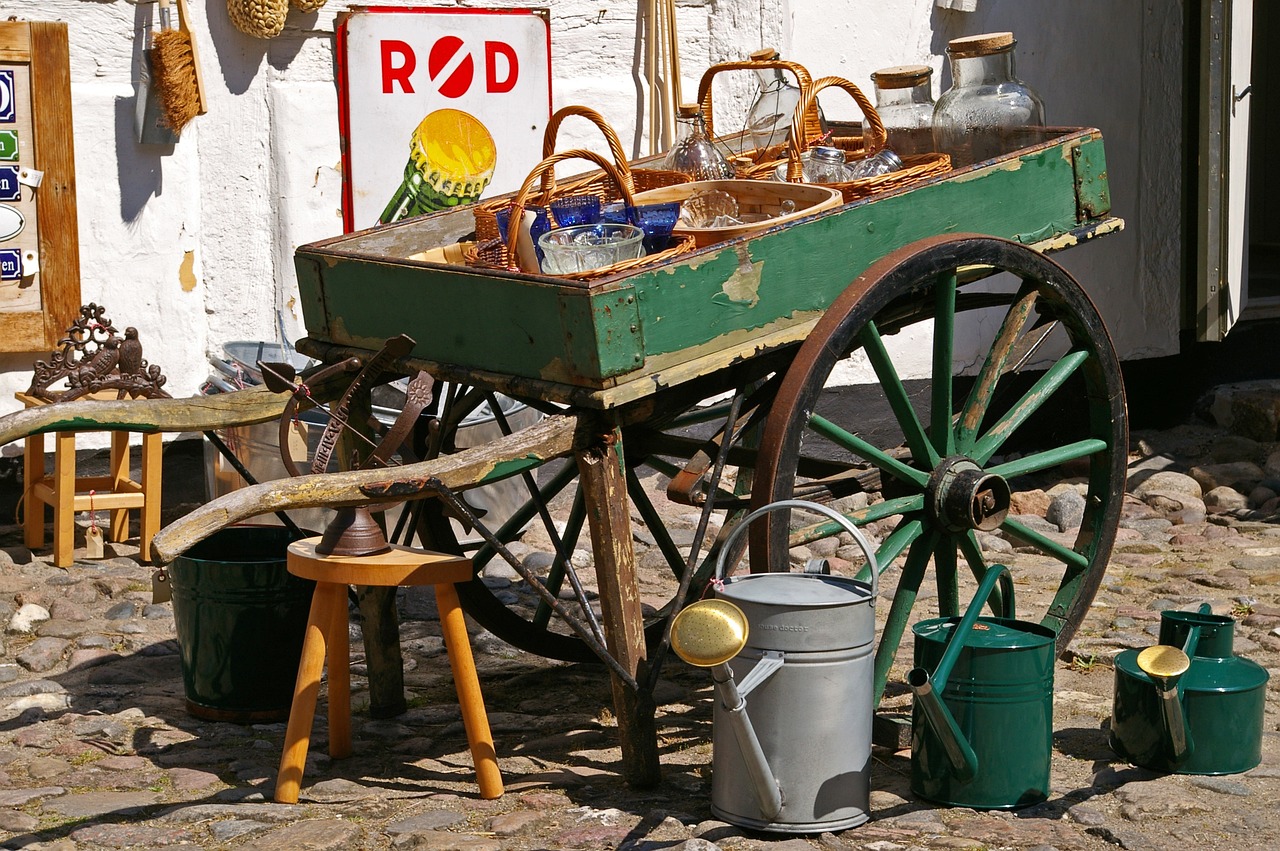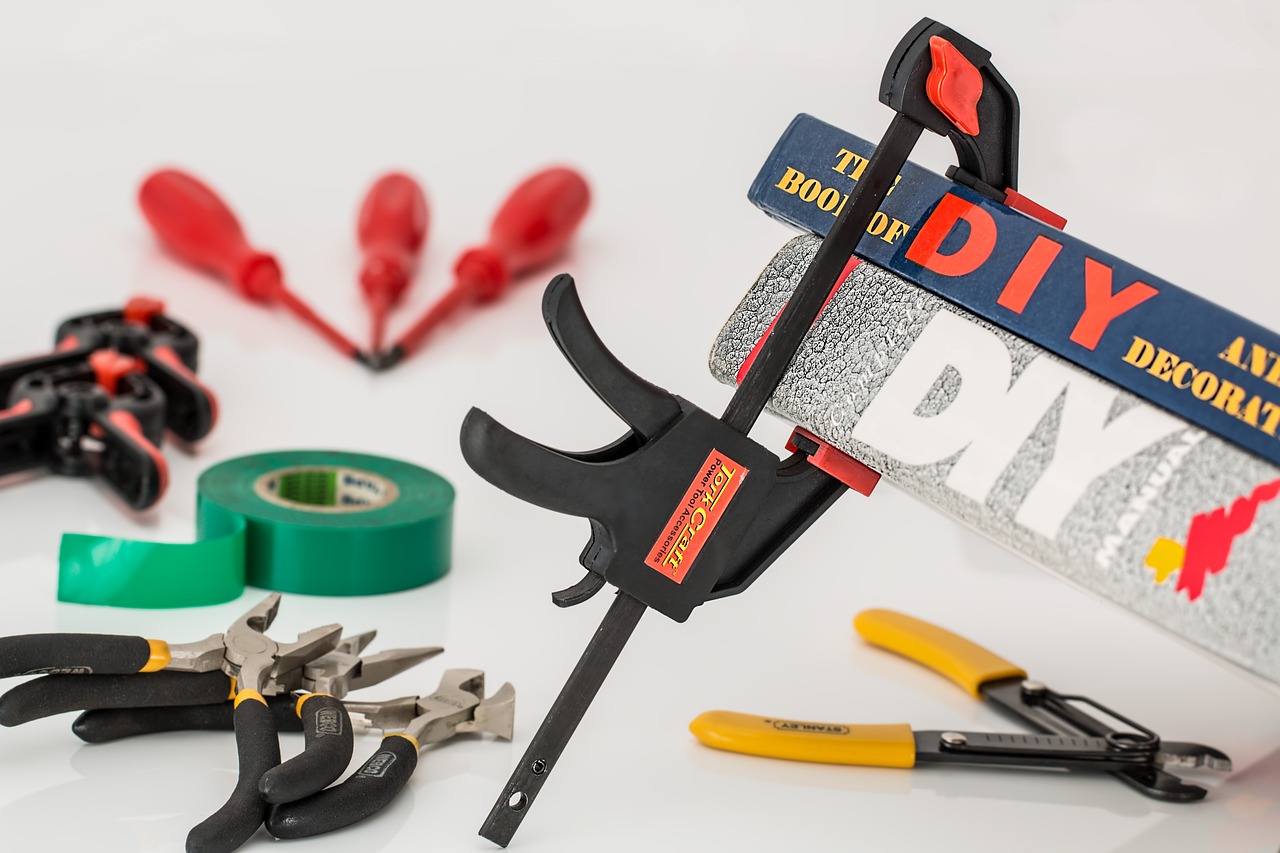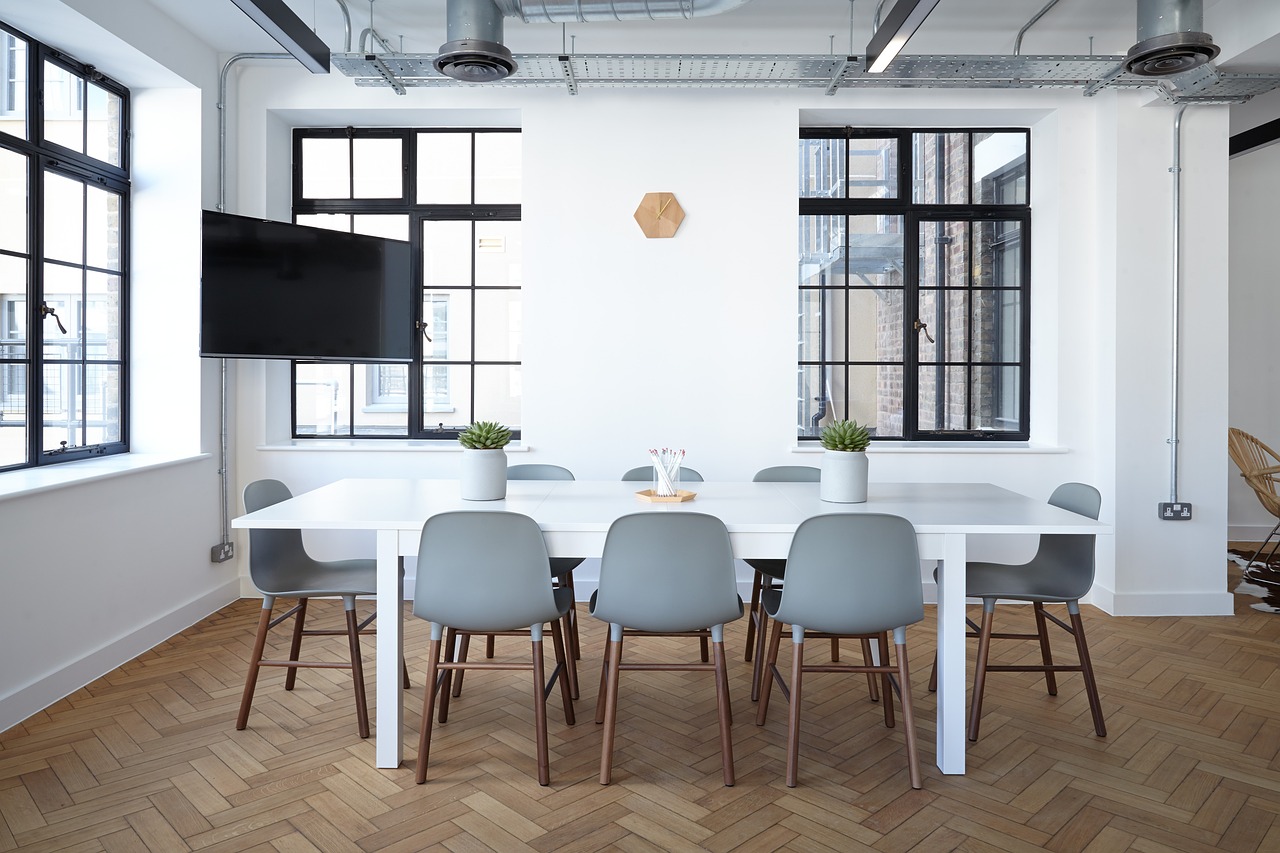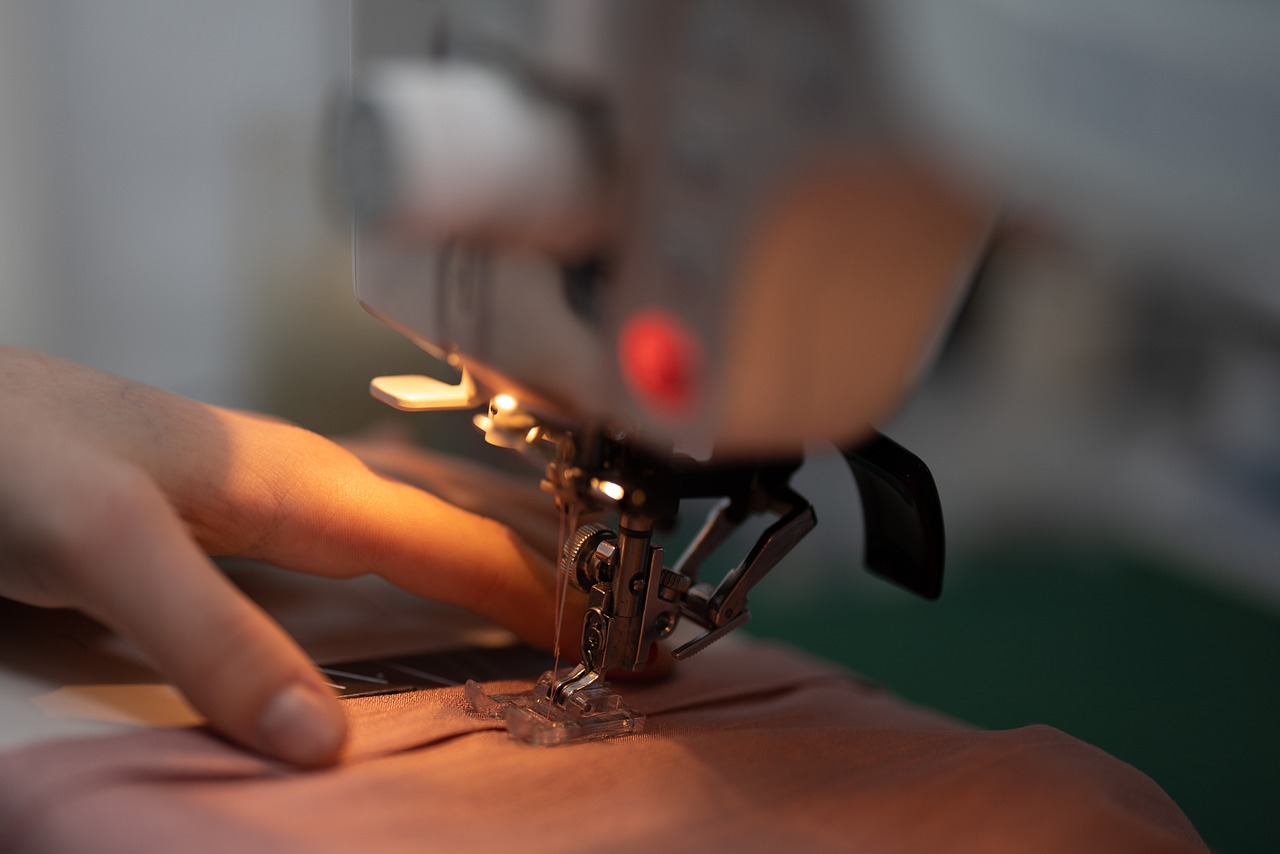How to Make DIY Accent Stools for Your Home
Are you looking to add a personal touch to your living space? DIY accent stools are a fantastic way to express your creativity while enhancing the aesthetic appeal of your home. Not only do they serve as functional furniture, but they also act as unique decorative pieces that can reflect your style. Imagine walking into your living room and seeing a beautifully crafted stool that you made yourself – it’s not just furniture, it’s a conversation starter!
In this article, we’ll dive into the creative process of building accent stools, offering you step-by-step instructions, material suggestions, and design ideas. Whether you’re a seasoned DIY enthusiast or a beginner looking to tackle your first project, this guide will equip you with the knowledge to create stunning accent stools that fit seamlessly into your home decor. So, grab your tools and let’s get started on this exciting journey of craftsmanship!
Selecting the appropriate materials is crucial for durability and aesthetics. The type of wood you choose will greatly impact the final look and strength of your stool. For example, hardwoods like oak, maple, or walnut are excellent choices for their durability and beautiful grain patterns. On the other hand, softwoods such as pine are more affordable and easier to work with, making them ideal for beginners.
When it comes to upholstery, consider using fabrics that complement your home’s color scheme. Options like canvas, velvet, or faux leather can add a touch of elegance or a casual vibe, depending on your style. Don’t forget about the finish; a good stain or sealant can protect your stool while enhancing its natural beauty. Here’s a quick reference table to guide you:
| Material Type | Pros | Cons |
|---|---|---|
| Hardwood | Durable, beautiful grain | More expensive |
| Softwood | Affordable, easy to work with | Less durable |
| Canvas | Durable, easy to clean | Limited color options |
| Velvet | Luxurious look | Can be difficult to clean |
Design is key to creating a stool that complements your home. Think about the overall style of your space – are you going for a modern, rustic, or minimalist look? Each design style has its own characteristics, and it’s essential to reflect those in your stool. For instance, a modern stool might feature clean lines and a sleek finish, while a rustic design could incorporate reclaimed wood and a distressed finish.
Let’s explore different design inspirations for accent stools:
- Modern: Clean lines, bold colors, and geometric shapes.
- Rustic: Reclaimed wood, natural finishes, and a cozy feel.
- Minimalist: Simple forms, neutral colors, and functionality.
Choosing the right colors can significantly impact your stool's appearance. Consider color theory when selecting hues. For example, complementary colors can create a vibrant look, while analogous colors offer a more harmonious feel. Think about how your stool's colors will interact with the existing decor in your home.
Stools can come in various shapes, from round to square, and each shape can affect both functionality and visual appeal. Round stools are great for smaller spaces and can be easily tucked away, while square stools offer a more stable surface for placing items. Consider your needs and the space available when deciding on the shape.
Before diving into construction, take a moment to sketch your design. This step is vital as it allows you to visualize your ideas and make necessary adjustments. Accurate measurements and a clear representation will ensure that your final product matches your vision. Use graph paper or a digital tool to create a detailed sketch that includes dimensions and materials.
Now that you’ve chosen your materials and designed your stool, it’s time to get building! The construction process can be broken down into manageable steps, ensuring a successful outcome.
Cutting materials accurately is vital for a sturdy stool. Ensure you have the right tools, such as a circular saw or miter saw, and always measure twice before cutting. This will help you avoid costly mistakes and ensure that all pieces fit together seamlessly.
Proper assembly techniques are crucial for ensuring your stool is stable and functional. Explore various methods, including joinery options like dowels or pocket holes, and fastening techniques such as screws or wood glue. A well-assembled stool not only looks professional but also stands the test of time.
1. What type of wood is best for a DIY accent stool?
Hardwoods like oak or maple are excellent for durability, while softwoods like pine are more affordable and easier to work with.
2. How can I choose a color scheme for my stool?
Consider using color theory to select hues that complement your existing decor. Think about the mood you want to create in your space.
3. What tools do I need to build my stool?
Basic tools include a saw, drill, measuring tape, and sandpaper. More advanced tools might include a miter saw or a pocket hole jig.
4. Can I customize the height of my stool?
Absolutely! Tailor the height to your needs, whether it’s for seating, a footrest, or a decorative piece.

Choosing the Right Materials
When it comes to crafting your own accent stools, the importance of cannot be overstated. Not only do the materials affect the durability of your stool, but they also play a significant role in its overall aesthetic appeal. Imagine sitting on a stool that feels sturdy yet looks exquisite; that’s the magic of selecting the right components. So, let’s dive into the world of wood types, upholstery options, and finishes that can elevate your DIY project to the next level.
First off, let’s talk about wood. The type of wood you choose will largely determine the strength and style of your stool. Here are some popular options:
- Pine: A budget-friendly choice, pine is lightweight and easy to work with. However, it’s softer, so it may not withstand heavy use.
- Oak: Renowned for its durability and beautiful grain, oak is a fantastic choice for a robust stool that stands the test of time.
- Birch: This hardwood is known for its fine, even grain and is ideal if you’re looking for a smooth finish.
- Maple: With its strength and resistance to wear, maple is perfect for a stool that will see a lot of action.
Once you’ve settled on the wood, it’s time to think about upholstery. The fabric you choose can dramatically change the look and feel of your stool. Here are some popular upholstery options:
- Canvas: Durable and easy to clean, canvas is perfect for a casual look.
- Leather: For a touch of luxury, leather offers sophistication and longevity.
- Velvet: If you want to add a pop of color and texture, velvet can create a stunning visual impact.
- Microfiber: This is a great option for families with kids, as it's stain-resistant and soft to the touch.
Don’t forget about the finish! The finish you choose not only protects the wood but also enhances its natural beauty. Whether you prefer a matte or glossy finish, it’s essential to select one that complements your design. Here are some common finishes:
- Polyurethane: This is a durable option that provides a protective layer, making it suitable for high-traffic areas.
- Oil: Natural oils can enhance the grain of the wood and provide a soft, warm finish.
- Wax: For a more traditional look, wax can give your stool a lovely sheen while allowing the wood to breathe.
In summary, the materials you select for your DIY accent stool can make or break your project. By carefully considering your wood type, upholstery, and finish, you’ll create a piece that not only serves a functional purpose but also adds a personalized touch to your home decor. Whether you go for a rustic oak or a sleek leather finish, the choices you make will reflect your unique style and taste. So, take your time, explore your options, and let your creativity shine!

Designing Your Stool
When it comes to designing your DIY accent stool, creativity and functionality go hand in hand. The stool you envision should not only serve its purpose but also reflect your personal style and enhance the overall aesthetic of your living space. Start by considering the dimensions of the stool. Think about where it will be placed and how it will be used. For instance, a stool intended for a cozy reading nook might need to be shorter and wider for comfort, while one meant for a dining area could be taller and slimmer to fit under a table.
Next, let’s dive into the various design styles available. Whether you’re drawn to the sleek lines of modern design, the warm charm of rustic styles, or the simplicity of minimalist aesthetics, your stool can embody these elements. Take a moment to visualize how different styles can blend with your existing décor. For example, a modern stool with a metallic finish can create a striking contrast against a wooden table, while a rustic design with distressed wood can add warmth to a contemporary space.
To spark your imagination, here are some popular style inspirations:
- Modern: Clean lines, geometric shapes, and a mix of materials like metal and wood.
- Rustic: Natural wood finishes, vintage accents, and a cozy, lived-in feel.
- Minimalist: Simple, functional designs with a focus on form and color.
Color plays a pivotal role in your stool’s design. Think of the color schemes that will harmonize with your home decor. A bold color can make your stool a statement piece, while muted tones can blend seamlessly into the background. Utilize color theory to select hues that evoke the right emotions and complement your existing palette. For instance, if your living room features cool blues and grays, consider a stool in a soft gray or a vibrant teal to add a pop of color without overwhelming the space.
Here’s a quick guide to help you choose the right colors:
| Color | Emotion | Best for |
|---|---|---|
| Blue | Calmness | Living rooms, bedrooms |
| Red | Energy | Kitchens, dining areas |
| Green | Balance | Home offices, relaxation areas |
Another aspect to consider is the shape variations of your stool. Round stools can create a sense of flow and are often easier to tuck away, while square or rectangular stools can provide a more structured look. Think about how the shape will affect not only the visual appeal but also the functionality. For instance, a round stool might be perfect for a casual seating area, while a square design could double as a side table.
Here are some common shapes and their benefits:
- Round: Great for small spaces, easy to move around.
- Square: Offers stability and can be used as a table.
- Rectangular: Provides more seating space, ideal for gatherings.
Finally, before you jump into the building phase, take the time to sketch your design. This step is crucial as it allows you to visualize your ideas and make adjustments before cutting any materials. Accurate measurements are essential to ensure that your stool will fit perfectly in the intended space. Use graph paper or a digital design tool to create a detailed sketch that includes dimensions and any specific features you want to incorporate.
In conclusion, designing your accent stool is an exciting journey that combines creativity with practicality. By carefully considering the materials, styles, colors, and shapes, you can create a unique piece that not only serves a purpose but also enhances the beauty of your home.
Here are some common questions that DIY enthusiasts often have when designing and building their accent stools:
- What materials are best for outdoor stools? - Weather-resistant materials like teak or treated wood are ideal for outdoor use.
- How can I ensure my stool is sturdy? - Use quality joinery techniques and ensure all joints are secure during assembly.
- Can I customize the height of my stool? - Absolutely! Just measure the intended space and adjust your design accordingly.

Style Inspirations
When it comes to designing your DIY accent stools, the possibilities are as vast as your imagination. The first step in your creative journey is to consider the that resonate with your personal taste and the overall aesthetic of your home. Whether you prefer a cozy, rustic vibe or a sleek, modern look, the right design can transform your space and make a statement.
One popular style is the modern minimalist approach, characterized by clean lines, simple shapes, and a focus on functionality. Imagine a stool crafted from smooth, light-colored wood with a sleek, upholstered seat. This design not only serves its purpose but also adds an elegant touch to any room. On the other hand, if you lean towards a more rustic charm, consider using reclaimed wood with a distressed finish. This style brings warmth and character to your home, creating a welcoming atmosphere that invites relaxation.
Another exciting option is the bohemian style, which embraces vibrant colors, intricate patterns, and eclectic materials. Picture a round stool adorned with colorful fabrics and tassels, perfect for adding a pop of personality to your living space. This style encourages mixing and matching, allowing you to showcase your unique flair. If you’re drawn to the industrial aesthetic, think about incorporating metal elements with a wooden seat. This combination creates a striking contrast that is both trendy and timeless.
To help you visualize these styles, here’s a quick comparison of some popular design inspirations:
| Style | Characteristics | Materials |
|---|---|---|
| Modern Minimalist | Clean lines, simple shapes, functional | Light-colored wood, upholstered seat |
| Rustic Charm | Warmth, character, welcoming | Reclaimed wood, distressed finishes |
| Bohemian | Vibrant colors, intricate patterns, eclectic | Colorful fabrics, tassels, mixed materials |
| Industrial | Trendy, timeless, striking contrast | Metal elements, wooden seats |
As you explore these styles, think about how each one fits within your existing decor. Are you aiming for a cohesive look, or do you want to create a bold statement piece? Remember, your accent stool is not just a functional item; it’s an opportunity to express your creativity and enhance your living space.
Ultimately, the best style for your DIY accent stool is one that speaks to you. Take some time to browse through design magazines, Pinterest boards, or even local furniture stores for inspiration. The more ideas you gather, the easier it will be to hone in on a design that truly reflects your personality. So, grab your sketchbook and start brainstorming—your perfect accent stool is just a few creative steps away!
Q: What materials are best for DIY accent stools?
A: The best materials depend on your desired style and functionality. Common choices include wood, metal, and upholstery fabrics. Consider durability and aesthetics when selecting materials.
Q: How can I ensure my stool is stable?
A: Stability is key! Make sure to use proper assembly techniques and consider the stool's design. A wider base can enhance stability, especially for taller stools.
Q: Can I customize the height of my accent stool?
A: Absolutely! Customize the height based on your needs. Just ensure that the proportions of the stool remain functional and comfortable for use.
Q: Are there any design trends I should consider?
A: Yes! Currently, sustainable materials, bold colors, and multifunctional designs are trending. Incorporating these elements can give your stool a modern edge.

Color Schemes
When it comes to creating your DIY accent stool, the color scheme you choose can make all the difference in the world. It's like the icing on the cake; without it, your stool might just feel a bit bland and uninviting. So, how do you select the perfect hues that will not only harmonize with your existing decor but also make a statement? Let's dive into some essential tips and tricks!
First and foremost, consider the overall theme of your space. Are you going for a cozy, rustic vibe? Or perhaps a sleek, modern aesthetic? Understanding your home’s style will help guide your color choices. For example, earthy tones like browns and greens work wonders in a rustic setting, while bold colors like navy blue or emerald green can add a pop of excitement to a minimalist decor.
Next, think about the color wheel. This handy tool can help you identify complementary colors that work well together. Complementary colors are those that are opposite each other on the wheel, such as blue and orange or red and green. Using these combinations can create a visually striking contrast that draws the eye. Additionally, consider using analogous colors—those next to each other on the wheel, like blue, teal, and green—for a more harmonious look.
Another factor to consider is the mood you want to evoke in your space. Colors can significantly influence emotions. For instance:
- Warm colors (reds, oranges, yellows) can create a sense of warmth and energy.
- Cool colors (blues, greens, purples) often promote calmness and tranquility.
- Neutral colors (whites, grays, browns) can provide a sophisticated backdrop that allows other elements to shine.
Once you have a general idea of the colors you want to use, it’s time to consider the finish of your stool. A glossy finish can make colors appear more vibrant, while a matte finish can soften them. If you’re using upholstery, fabric texture can also affect how color is perceived. For example, a plush velvet might give a rich, luxurious feel, while a smooth linen can lend a more casual vibe.
Lastly, don’t forget about sample testing. Before committing to a color, try painting a small section of your stool or using fabric swatches to see how they look in your space. Lighting can drastically change the appearance of colors, so what looks good in the store might not have the same effect at home. By testing out your colors, you can ensure that your DIY accent stool will perfectly complement your living space.
In conclusion, choosing the right color scheme for your accent stool is about more than just picking your favorite shade. It’s about creating a cohesive look that enhances your home’s atmosphere and reflects your personal style. So take your time, experiment a little, and enjoy the creative process!

Shape Variations
When it comes to accent stools, play a crucial role in both functionality and aesthetics. Each shape brings its own unique character and can dramatically change the vibe of your space. For instance, a round stool can create a more casual and inviting atmosphere, while a square stool often conveys a sense of modernity and structure. Understanding these differences can help you make a more informed decision when designing your DIY accent stool.
Let's dive into some popular shapes and their characteristics:
- Round Stools: These are perfect for small spaces as they offer flexibility in placement. Their soft edges can soften the look of a room, making it feel more approachable. Plus, they can easily fit into corners or be pulled into a circle during gatherings.
- Square Stools: Square designs are great for maximizing surface area. They can double as side tables or extra seating, making them incredibly versatile. Their sharp lines often complement contemporary decor, adding a touch of elegance.
- Rectangular Stools: These are ideal for narrow spaces or as a footrest. They can be placed against a wall or at the foot of a bed, providing functionality without taking up too much room.
- Unique Shapes: Don’t shy away from experimenting with organic or asymmetrical designs. These can serve as statement pieces that draw the eye and add an artistic flair to your decor.
Ultimately, the shape you choose should reflect both your personal style and the practical needs of your space. Consider how the stool will be used: will it primarily serve as extra seating during gatherings, or will it be a decorative piece? This thought process can significantly influence your choice.
Moreover, the shape can also affect the comfort of the stool. For instance, a round stool often provides a more comfortable seating experience due to its lack of hard edges, while square stools might require additional cushioning for comfort. When designing your stool, think about how the shape will affect not just the look, but also the feel of the piece.
In conclusion, shape variations in accent stools are not merely about aesthetics; they also impact functionality and comfort. By considering these factors, you can create a piece that not only enhances your living space but also serves its intended purpose effectively.
Q: What is the best shape for a small living room?
A: Round stools are often the best choice for small living rooms as they can be easily moved and fit into tight spaces.
Q: Can I mix different shapes of stools in one room?
A: Absolutely! Mixing different shapes can create a dynamic and interesting look, just ensure that they complement each other in style and color.
Q: How do I decide on the height of my stool?
A: The height of your stool should correspond with the furniture it will accompany. For example, if it's for a coffee table, a height of 18-20 inches is usually ideal.

Sketching Your Design
When it comes to creating your DIY accent stool, is a crucial step that can make or break your project. Think of it as the blueprint of your masterpiece; without it, you're building a house of cards! Start by gathering your ideas and inspirations. Grab a pencil and some paper, or use a digital tool if that’s more your style. The goal here is to visualize your stool before you dive into cutting and assembling materials.
Begin with the basic shape of your stool. Is it going to be round, square, or perhaps something more unique like an octagon? Draw the outline first, keeping in mind the dimensions you desire. Measurements matter! A stool that's too tall or too short can throw off the entire aesthetic of your space. For reference, a typical seat height is around 18 inches, but this can vary depending on your needs.
Once you have the outline, think about the legs and support structure. Will your stool have four legs, or will it be a single pedestal? Sketch out different configurations. You might find that a simple four-legged design offers more stability, while a pedestal could add a modern touch. Don’t forget to consider the thickness of the materials you’ll use; this will affect both the strength and the look of your stool.
Next, it's time to add some flair! Consider the upholstery and finish you want to incorporate. If you’re going for a cozy, rustic vibe, maybe you’ll want to sketch in some soft fabric or a natural wood finish. On the other hand, if modern is your game, think about sleek lines and bold colors. Remember, your stool should reflect your personal style and complement your home decor.
As you finalize your sketch, take a moment to think about functionality. Will your stool serve as additional seating, a side table, or perhaps a decorative piece? This will help you decide on the final touches. You might want to include storage options within the design or even incorporate a unique feature like a hidden compartment. The more thought you put into your design now, the more satisfaction you'll feel when you see the finished product!
Lastly, once you’re happy with your sketch, it’s time to create a materials list. This is where you jot down everything you’ll need, from wood types to upholstery fabric. Having a clear list will save you time and ensure you don’t forget any crucial elements when you start building.
Remember, sketching is a process. Don’t be afraid to make changes as you go along. Each iteration can lead to a better final product. So grab that pencil, unleash your creativity, and let your imagination run wild!

Step-by-Step Construction Process
Building your own accent stool can be a rewarding experience, and it’s easier than you might think! In this section, we’ll walk you through a that will not only guide you in creating a sturdy piece of furniture but also help you express your personal style. Before diving into the construction, it’s essential to gather all the necessary materials and tools. A well-prepared workspace can make a significant difference in the quality of your work.
First things first, let’s talk about the materials you’ll need. Depending on your design, you might require:
- Wood: Plywood, hardwood, or even reclaimed wood.
- Upholstery fabric: Choose something durable and stylish.
- Foam padding: For added comfort, especially if your stool will be used for sitting.
- Wood glue and screws: Essential for assembly.
- Finishing materials: Paint, stain, or sealant to protect your stool.
Now, let’s get into the nitty-gritty of the construction process. The first step is cutting the materials. You’ll want to measure twice and cut once to ensure accuracy. Using a circular saw or a jigsaw can make this task easier. If you’re not comfortable with power tools, consider asking a friend for help or visiting a local maker space where you can find assistance. Remember, safety first! Always wear protective gear when handling tools.
After cutting your pieces, it’s time for assembly. Start by laying out all your cut pieces to visualize how they will come together. You’ll typically need a top, legs, and possibly a support brace, depending on your design. Joinery techniques like pocket holes or dowels can provide extra stability. If you’re using screws, pre-drill holes to avoid splitting the wood. As you assemble, make sure everything is square and level; this will ensure your stool is not only functional but also aesthetically pleasing.
Once assembled, it’s time to focus on the finishing touches. This is where your creativity can truly shine! Apply your chosen paint or stain evenly, and consider adding a protective sealant to ensure durability. If you’re adding upholstery, cut your foam and fabric to size, then attach them to the stool using a staple gun. Make sure to pull the fabric tight to avoid wrinkles.
Finally, let’s not forget about the final inspection. Once everything is dry and set, give your stool a good once-over. Check for any rough edges or loose screws, and make any necessary adjustments. It’s important that your stool is not only stylish but also safe to use. And there you have it! With a bit of patience and creativity, you’ve crafted a unique accent stool that reflects your personal style.
Q: What type of wood is best for a DIY accent stool?
A: Hardwoods like oak or maple are excellent choices for durability, but plywood can also work well for a budget-friendly option.
Q: How can I ensure my stool is stable?
A: Make sure to use proper joinery techniques, check that all legs are the same length, and assemble the stool on a flat surface.
Q: Can I customize the height of my stool?
A: Absolutely! Just adjust the length of the legs during the cutting phase to achieve your desired height.
Q: What if I don't have power tools?
A: Hand tools can also get the job done, though it may take a bit more time. Alternatively, consider borrowing tools from friends or using a local workshop.

Cutting the Materials
When it comes to creating your own DIY accent stool, is one of the most critical steps in the entire process. The precision of your cuts directly influences the stability and overall appearance of your stool. So, how do you ensure that your cuts are accurate and clean? Well, let’s dive into the tools and techniques you'll need!
First off, you’ll want to gather the right tools. A circular saw is a popular choice for cutting larger pieces of wood, while a jigsaw can help you navigate curves and intricate designs. If you’re looking for something more precise, a miter saw is perfect for making angled cuts. Don’t forget about safety gear! Always wear protective eyewear and gloves to keep yourself safe while working.
Now, let’s talk about measuring. The old adage “measure twice, cut once” couldn’t be more accurate. Before you even think about reaching for that saw, grab a measuring tape and a pencil. Mark your measurements clearly on the wood, and double-check them before you make any cuts. This step is crucial because even a small error can lead to a stool that wobbles or looks uneven.
When you’re ready to cut, ensure the wood is secured firmly on a flat surface. Using clamps can provide extra stability, preventing any movement while you work. If you’re cutting long pieces, support them at both ends to avoid any splintering or breaking. As you cut, maintain a steady hand and follow the marked lines closely. If you’re using power tools for the first time, practice on scrap wood to get a feel for the equipment.
Once you’ve made your cuts, it’s time to smooth the edges. A sander or sandpaper will help you achieve a polished finish, removing any rough spots that could snag fabric or hurt someone. Pay special attention to corners and edges, as these areas can often be sharp and uncomfortable.
To summarize, here’s a quick checklist for cutting your materials:
- Gather your tools: circular saw, jigsaw, or miter saw
- Wear safety gear: goggles and gloves
- Measure accurately and mark your wood clearly
- Secure the wood before cutting
- Smooth the edges after cutting
With these tips in mind, you'll be well on your way to cutting the materials for your accent stool like a pro. Remember, the key to a successful DIY project lies in the details, and cutting is where it all begins. So, take your time, be patient, and enjoy the process!

Assembly Techniques
When it comes to assembling your DIY accent stool, the techniques you choose can make all the difference between a wobbly piece of furniture and a sturdy, stylish addition to your home. First and foremost, understanding the various joinery options is crucial. For instance, you might consider using butt joints, which are simple to create but may require additional reinforcement, or more advanced methods like dovetail or mortise-and-tenon joints, which provide exceptional strength and durability.
Moreover, fastening techniques play a significant role in the overall stability of your stool. You can opt for screws, which are easy to work with and provide a strong hold, or dowels, which can create a seamless look that’s aesthetically pleasing. If you're feeling adventurous, you can even explore using pocket hole joinery, which allows for hidden screws and a clean finish. Each method has its own advantages, so it’s essential to choose one that aligns with your skill level and desired outcome.
Additionally, don’t overlook the importance of wood glue in your assembly process. This adhesive can significantly enhance the strength of your joints. When applied correctly, it can create a bond that’s stronger than the wood itself. Just remember to clamp the pieces together while the glue dries to ensure a tight fit. This technique is particularly useful when working with softer woods that may not hold screws as securely.
Another vital aspect of assembly is ensuring that all parts are aligned properly. Use a square tool to check that your corners are at right angles, and don’t hesitate to make adjustments as needed. A stool that’s not square can lead to instability and an uneven sitting surface. Once everything is aligned, take the time to sand down any rough edges before applying your finish. This not only enhances the appearance of your stool but also makes it safer to use.
To give you a clearer picture of these assembly techniques, here’s a simple comparison table:
| Technique | Advantages | Considerations |
|---|---|---|
| Butt Joint | Easy to make, quick assembly | May require reinforcement |
| Dovetail Joint | Strong and durable | Requires more skill and tools |
| Pocket Hole Joinery | Hidden screws, clean finish | Specialized tools needed |
| Wood Glue | Enhances joint strength | Needs clamping time |
In summary, assembling your accent stool is not just about putting pieces together; it’s about choosing the right techniques that will ensure your creation is both functional and visually appealing. So, take your time, plan your assembly process carefully, and don’t be afraid to experiment with different methods to find what works best for you. Happy crafting!
Q: What type of wood is best for a DIY accent stool?
A: Generally, hardwoods like oak or maple are preferred for their durability, but softer woods like pine can also work well for lighter stools.
Q: How long does it take to build an accent stool?
A: Depending on your skill level and the complexity of the design, it can take anywhere from a few hours to a couple of days to complete your stool.
Q: Do I need special tools to assemble my stool?
A: While basic tools like a saw, drill, and screws are essential, some advanced techniques may require specialized tools like a pocket hole jig or clamps.
Q: Can I customize the height of my stool?
A: Absolutely! Just make sure to adjust your measurements accordingly when cutting your materials to achieve the desired height.
Frequently Asked Questions
- What materials do I need to make a DIY accent stool?
To create your own accent stool, you'll need some basic materials like wood (choose from options like pine, oak, or plywood), upholstery fabric if you're adding padding, and finishing supplies such as paint or varnish. Don't forget tools like a saw, drill, and screws!
- How do I choose the right design for my stool?
Choosing the right design involves considering your home’s decor style. Think about whether you prefer a modern, rustic, or minimalist look. Sketching out your ideas can help visualize how the stool will fit into your space.
- What are some popular color schemes for accent stools?
Popular color schemes often include neutral tones paired with bold accent colors. For example, a soft gray stool can be paired with vibrant cushions or a bright finish to make it pop. Remember, colors can dramatically change the feel of a room!
- How do I accurately cut the materials for my stool?
Accurate cutting is crucial for a sturdy stool. Use a measuring tape to mark your cuts clearly, and a saw for precise cuts. Remember to double-check your measurements before cutting to avoid any mistakes!
- What assembly techniques should I use for stability?
For a stable stool, consider using strong joinery techniques like pocket holes or dowels. Additionally, make sure to use screws that are appropriate for the materials you're working with to ensure everything holds together well.
- Can I customize the size of my accent stool?
Absolutely! One of the best parts of DIY projects is that you can customize the size to fit your needs. Just remember to adjust your measurements accordingly when sketching your design and cutting your materials.
- Is it difficult to build an accent stool as a beginner?
Not at all! Building an accent stool can be a fun and rewarding project for beginners. Just follow the step-by-step instructions, take your time, and don’t hesitate to ask for help if you get stuck!



















